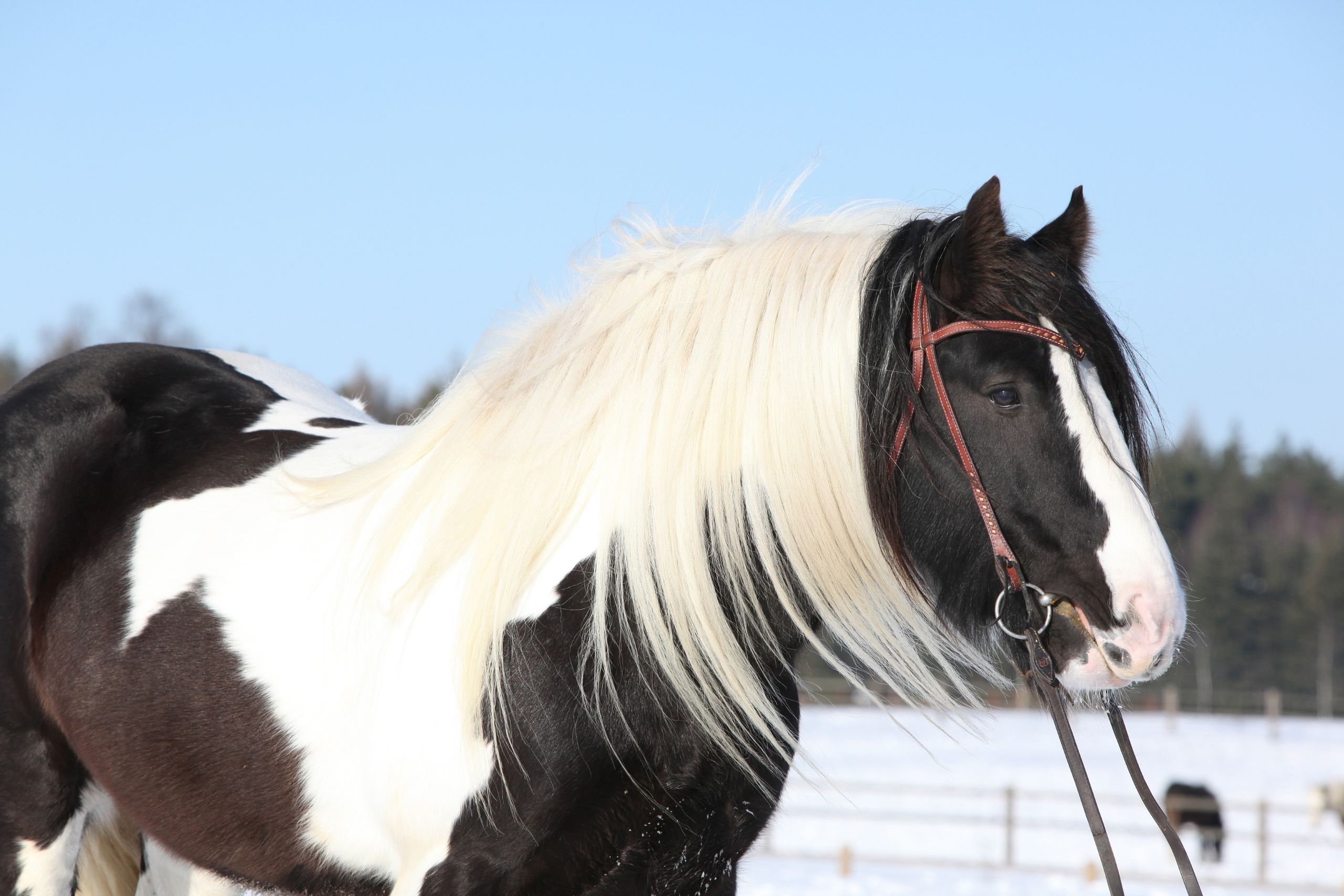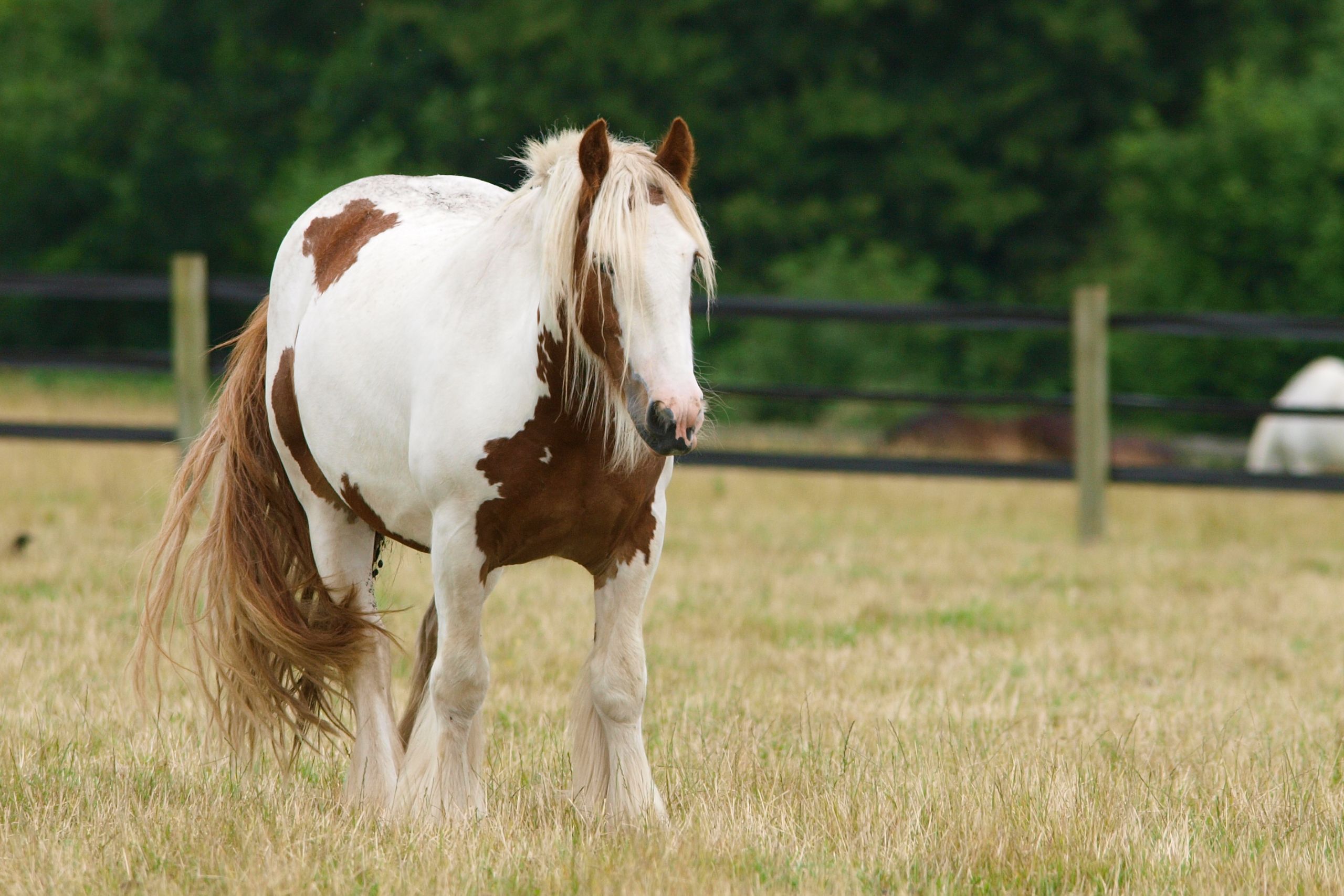Looking for a sensible easy-keeping horse that is also a lot of fun? Consider the Cob Horse, a friendly family favorite! Cobs come in all shapes, sizes, and colors because Cob Horses are a type rather than a breed. Having said that, some types of Cob Horses have become so popular over the centuries that they do have the status of breeds. These include the Welsh Cob and the Gypsy Cob. What are the qualities that make the Cob so appealing.
History and Origins
The Cob Horse probably takes its name from an old English word meaning “round”. The term was applied to loaves of bread and also to hazelnuts. Like these, the true Cob is a lovely combination of toughness and softness! Cob Horses are believed to have developed from a type of medieval riding horse called a rouncy. The rouncies were short, round, and strong horses that were often ridden by squires.
One of the tasks the squires had to perform was to lead the knight’s destrier (a warhorse) when he was not in battle. When traveling, the knight would ride an ambling horse with very smooth paces. However, it’s believed the warhorses tended to be trotters, so the squires needed a trotting horse to keep pace with their master’s horses. Certain areas of Britain became particularly noted for their Cobs, while other areas specialized in riding horses. A horse called the Powys Equine (Welsh Horse) appears in records as early as the twelfth century AD.
Today the Welsh Cob, a likely descendant of the Powys Equine, is famous throughout the world. Cobs were also used in Normandy in France, giving rise to the Norman and French Cobs. After the Middle Ages, Cobs became useful farm animals used for riding, driving, and draft work.
Are Cobs good first horses?
Some Cobs make excellent first horses. Each one is different, though. Bear in mind that Cobs with lots of feathers can need extra care.
Cob Horse – Conformation
“Chunky” is a word that is often used in Britain to describe a Cob type. They are not as big and heavy as a full-size draft horse nor as light as a pony or general-purpose riding horse. They generally do not have long legs but often have a very active trot like their ancestors. Their legs are exceptionally strong, with excellent hocks.
Their sturdy, stout build is suitable for carrying large riders. Cobs generally range between 14.2 hands high (58 inches/148 cm) and 15 hands high (60 inches/153 cm). Some competitions set a maximum height of 15.1 hands high (61 inches/155 cm). In recent years, a type of small Cob known as a “Mini Cob” has developed as a riding pony for children. Cobs have handsome heads with bright eyes, and some have a tendency for Roman noses.
Although their barrels are round, the withers should be well defined. Coat colors are unrestricted, and the black and white Cobs associated with traveling people, called Traditional or Gypsy Cobs, are very popular today. Cobs often, though not always, have full, flowing feathers and these need special care.

Traditional horses or Colored Cobs in Britain and Ireland and Gypsy Vanners in the USA are now registered with the Gypsy Horse Association. All Cobs should be strong enough to be ridden, driven, and do light draft work.
Characteristics of the Cob Horse
Cobs are often described as “honest” and “genuine.” A good Cob has a sensible character and enjoys getting involved in a range of activities. They make good family horses as they can carry most family members. They are also close to the ground, making them easier to mount for anyone who is small or not so active. For this reason, they are often used by organizations such as Riding for the Disabled in the UK. They do not require complicated feeding regimes, and most live outside happily all year round with shelter.
That is not to say they are entirely maintenance-free, though. Care needs to be taken with their diet as too rich grazing will create problems, such as laminitis. Cobs with full feathers need special care. They are prone to various complaints, which often come under the broad heading “dermatitis.” The causes include mite irritation and excessive keratin growth. In some cases, this can develop into a serious condition known as Chronic Progressive Lymphedema. Temperament-wise, most Cobs are laid-back, but some can be pretty fiery and energetic characters. They’re all individuals, and that’s what makes them loveable!
What are Cob Horses used for?
As well as being great horses for riding and driving, Cobs can also enjoy show jumping, eventing, and dressage. They are can-do characters.

Cobs generally range between 14.2 hands high (58 inches/148 cm) and 15 hands high (60 inches/153 cm). Some competitions set a maximum height of 15.1 hands high (61 inches/155 cm).
Breeding and Uses
Many Cobs are unregistered, while others are registered in formal stud books. Welsh Cobs, also known as Welsh Section D, have been created from Welsh ponies using an input of Hackney, Yorkshire Coach Horse, and Roadster. This has enhanced their existing qualities to give them an amazing trot and lots of stamina. Traditional horses or Colored Cobs in Britain and Ireland and Gypsy Vanners in the USA are now registered with the Gypsy Horse Association. All Cobs should be strong enough to be ridden, driven, and do light draft work.
Show Cobs
The Show Cob is a type of show horse. These handsome, majestic horses are often shown with roached manes to enhance their powerful necks. They should be able to display the steadiness and reliability required in a ridden Cob and also make an impression.
Working Cobs
Cobs are strong enough to work on farms and smallholdings and can often be found working as logging horses.
Are Cob Horses warmblooded or coldblooded?
Cobs are generally classed as coldblooded horses. With their mixed ancestry, though, some of them are really warmbloods. A few definitely think they’re hotblooded!
Popular Cob Breeds
Welsh Cobs are dynamic horses with stamina and an eye-catching trot. Gypsy Vanners are often black and white with flowing manes, tails, and feathers. The traveling people of Ireland and Britain are famous for their Cobs, which draw their caravans. The Irish Cob includes both black and white and solid coat colors.

